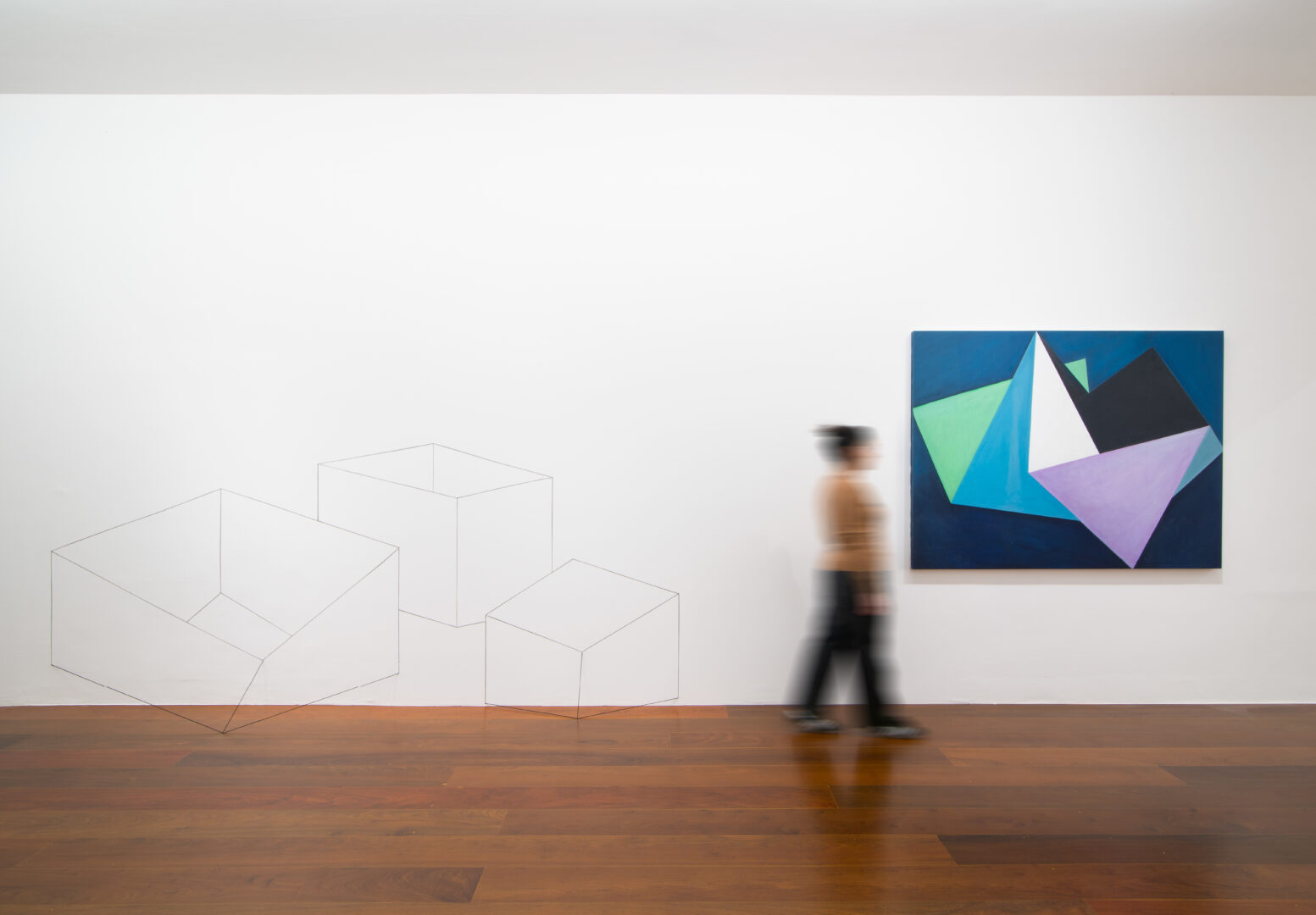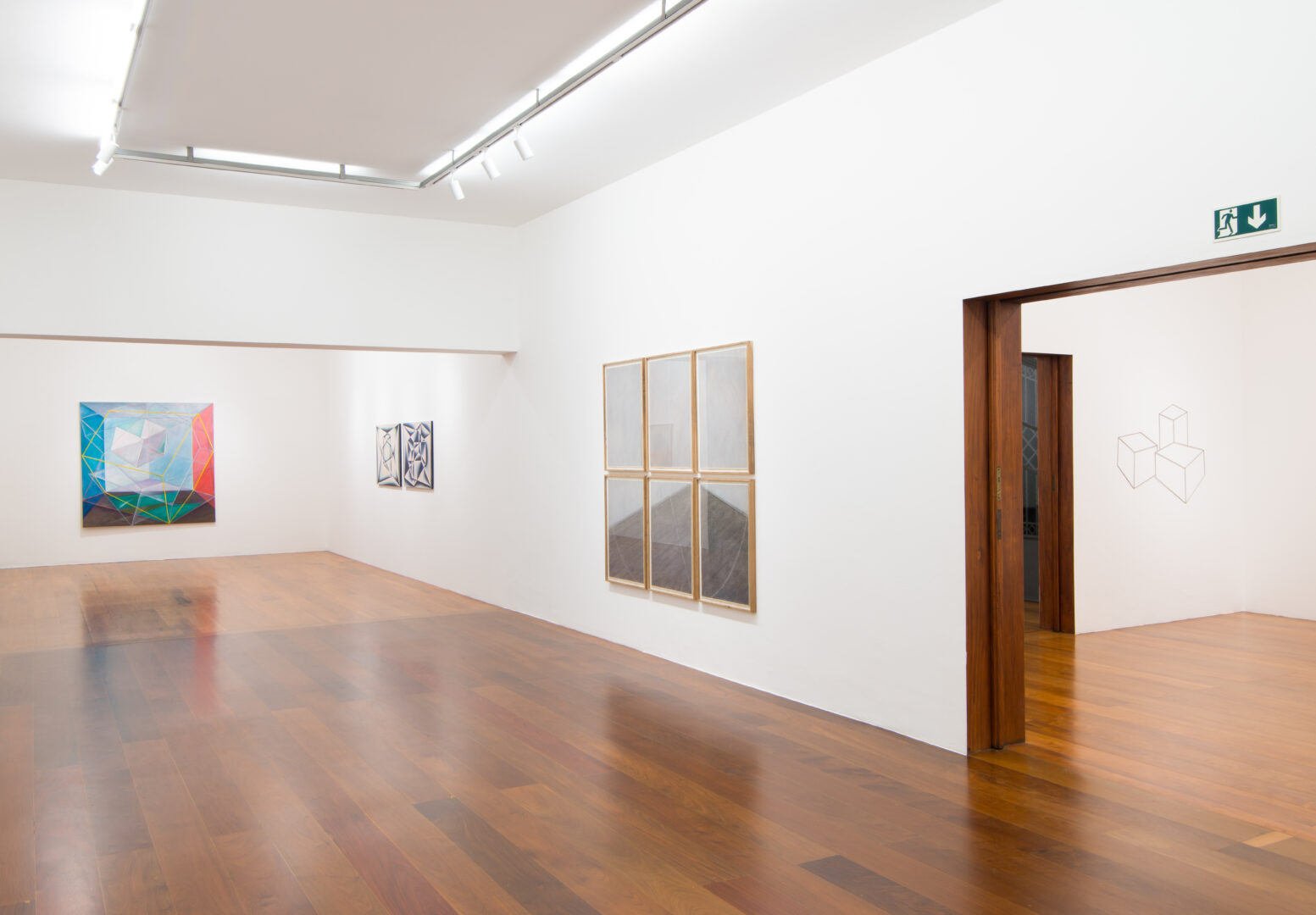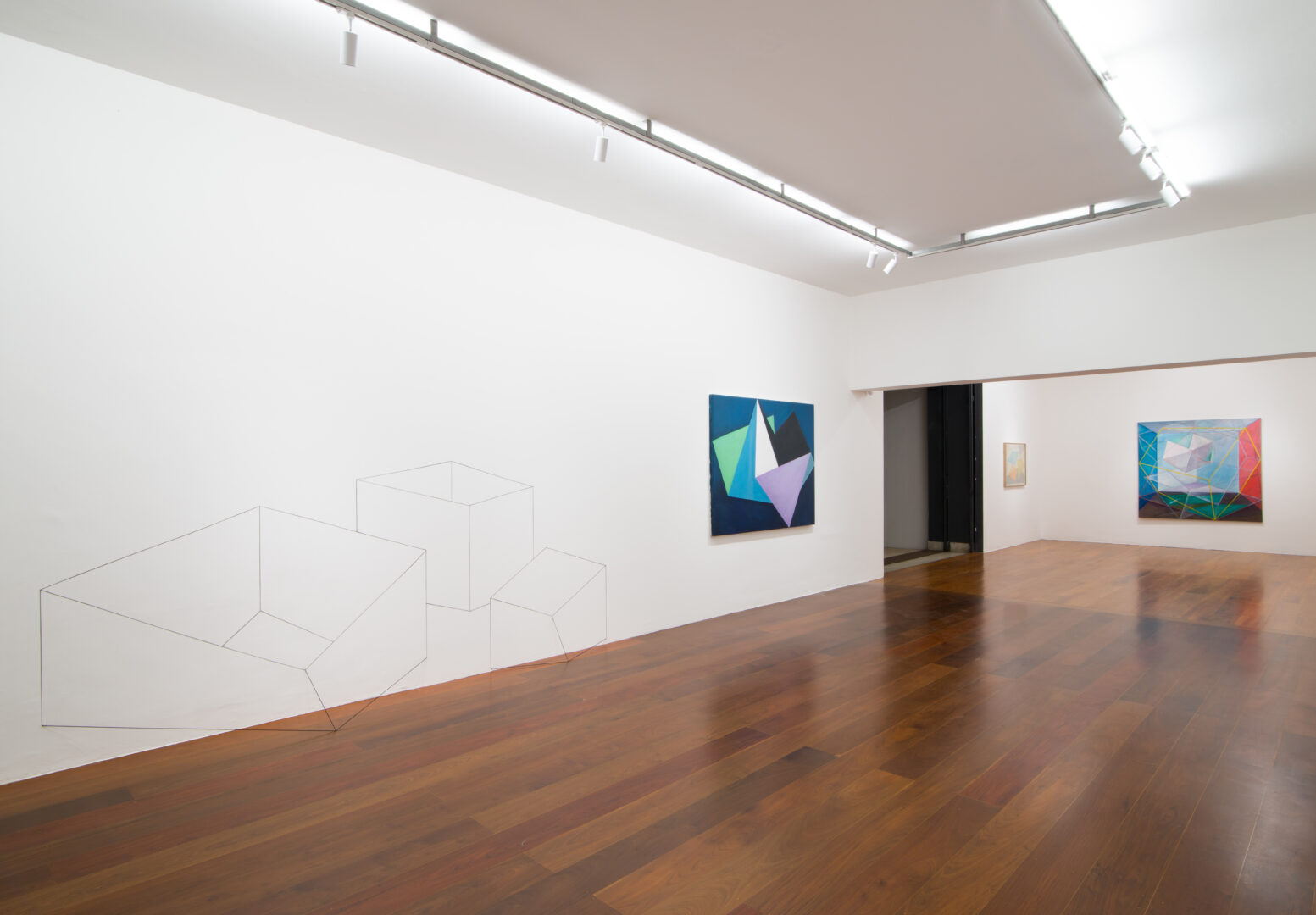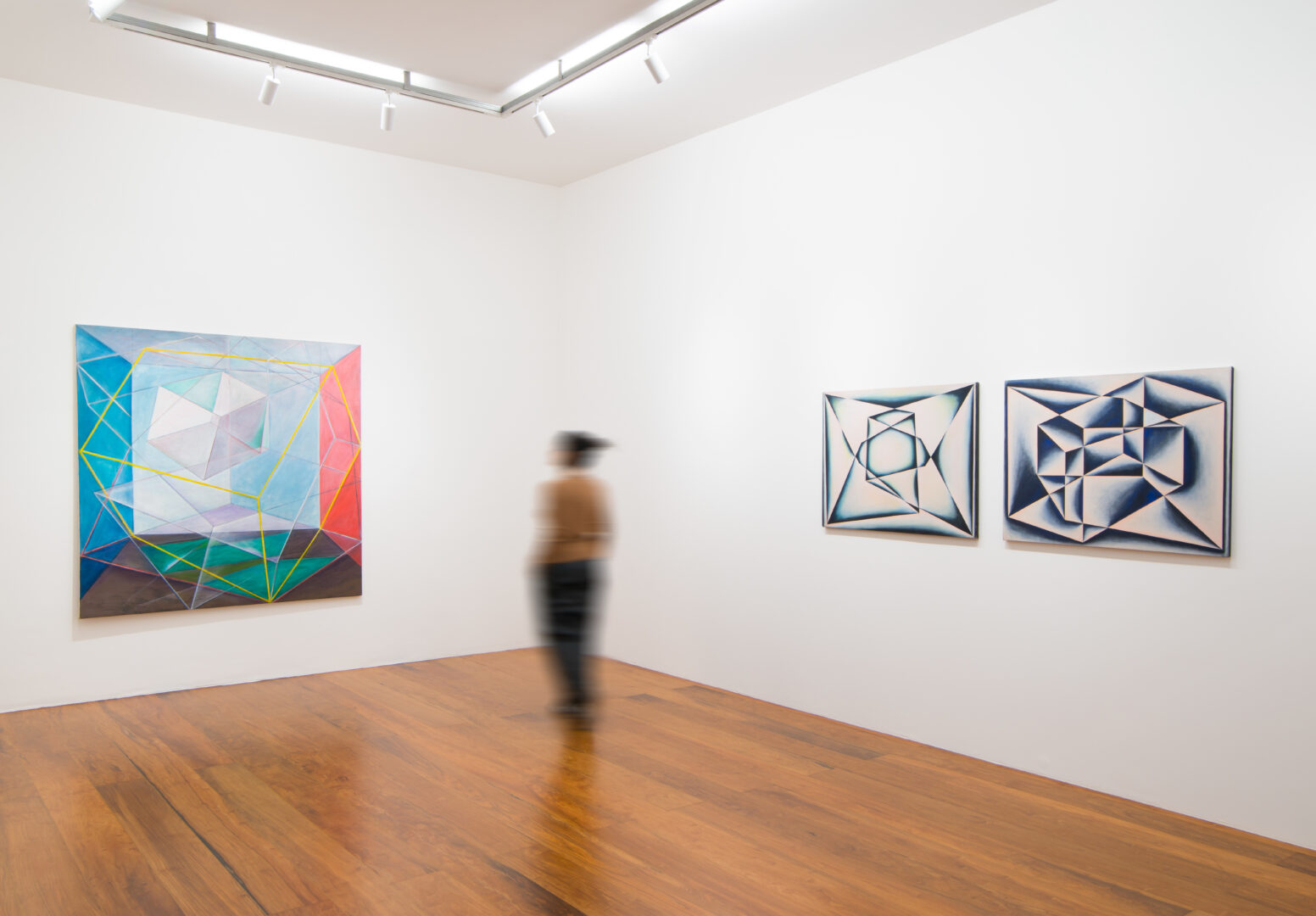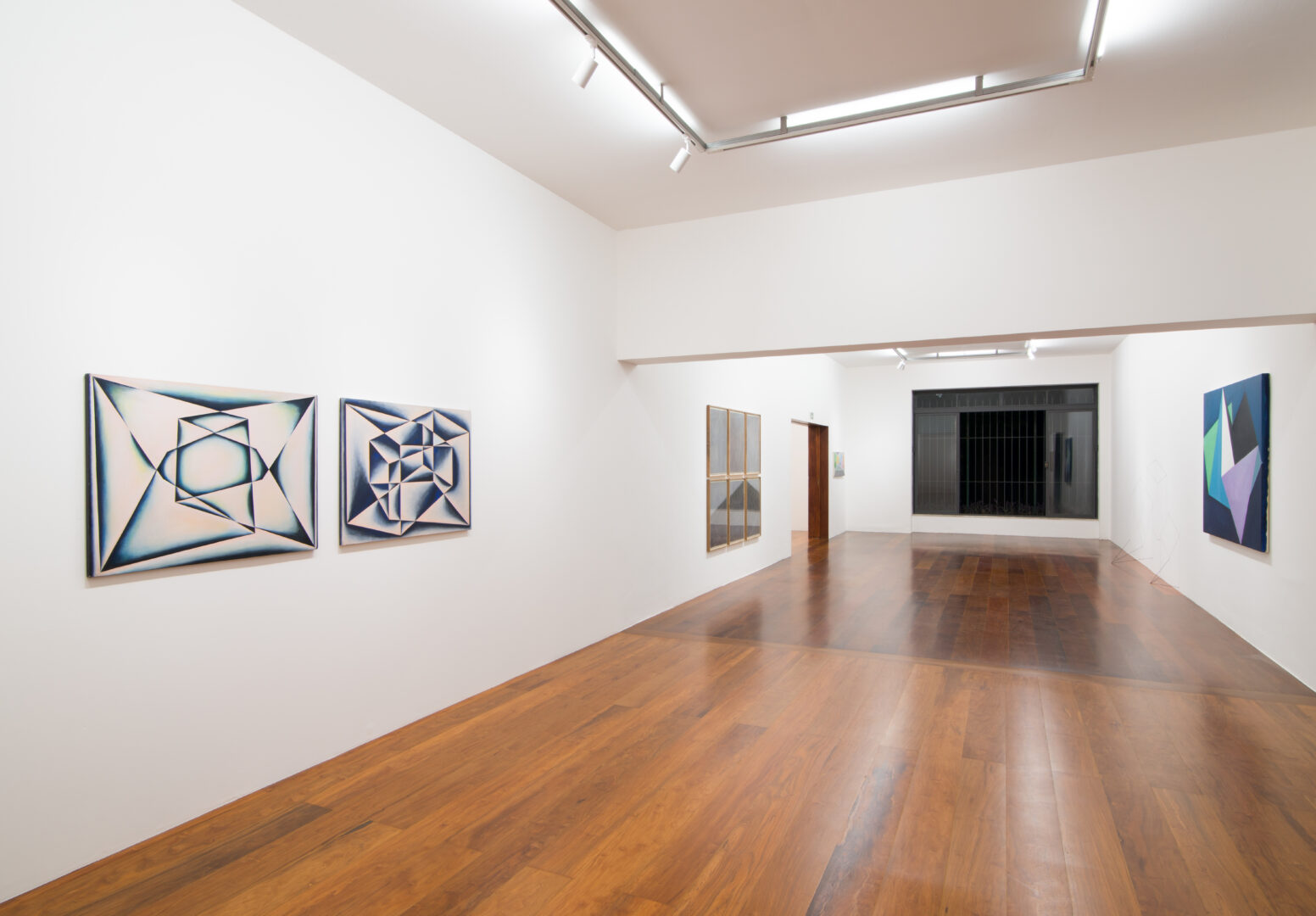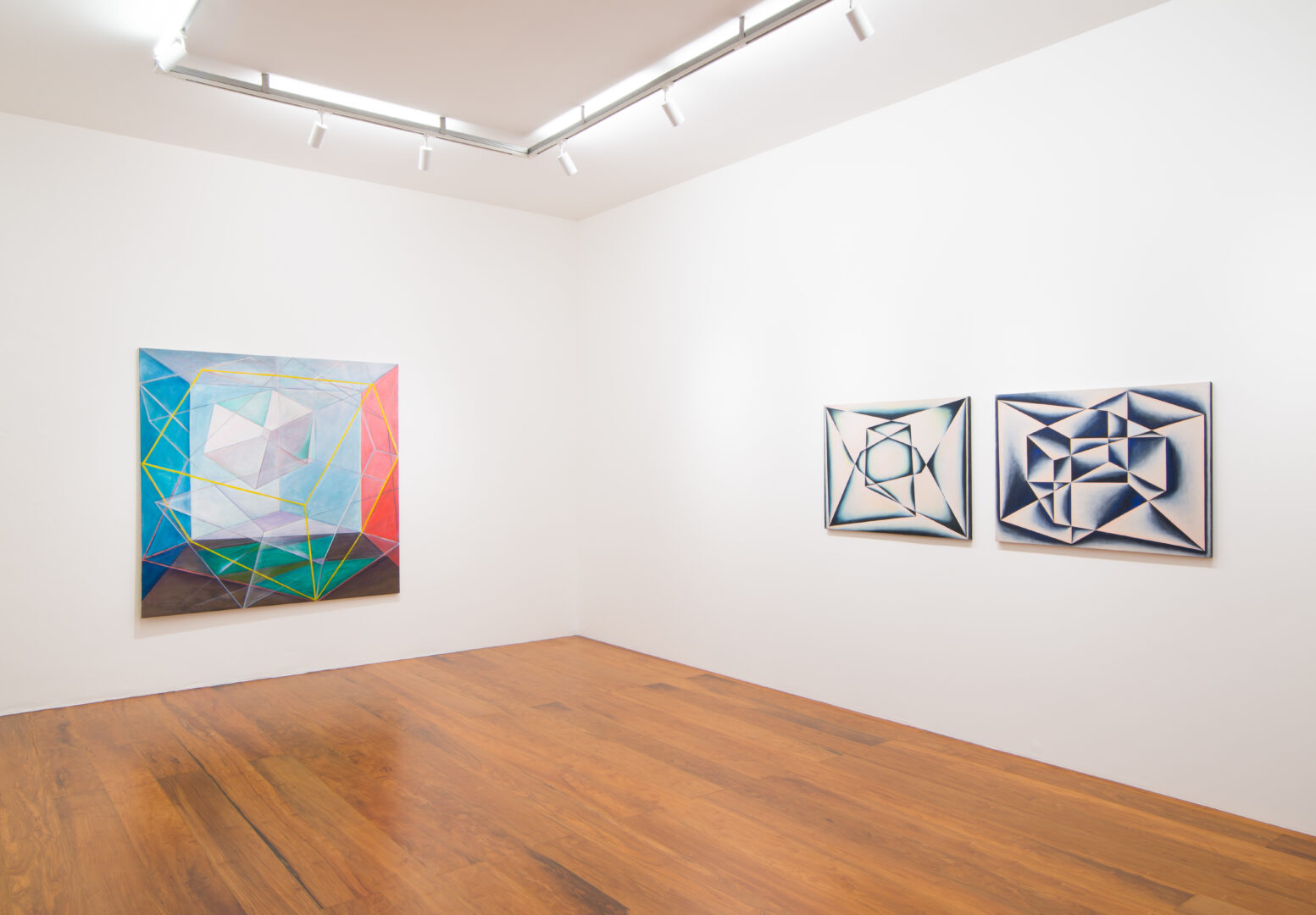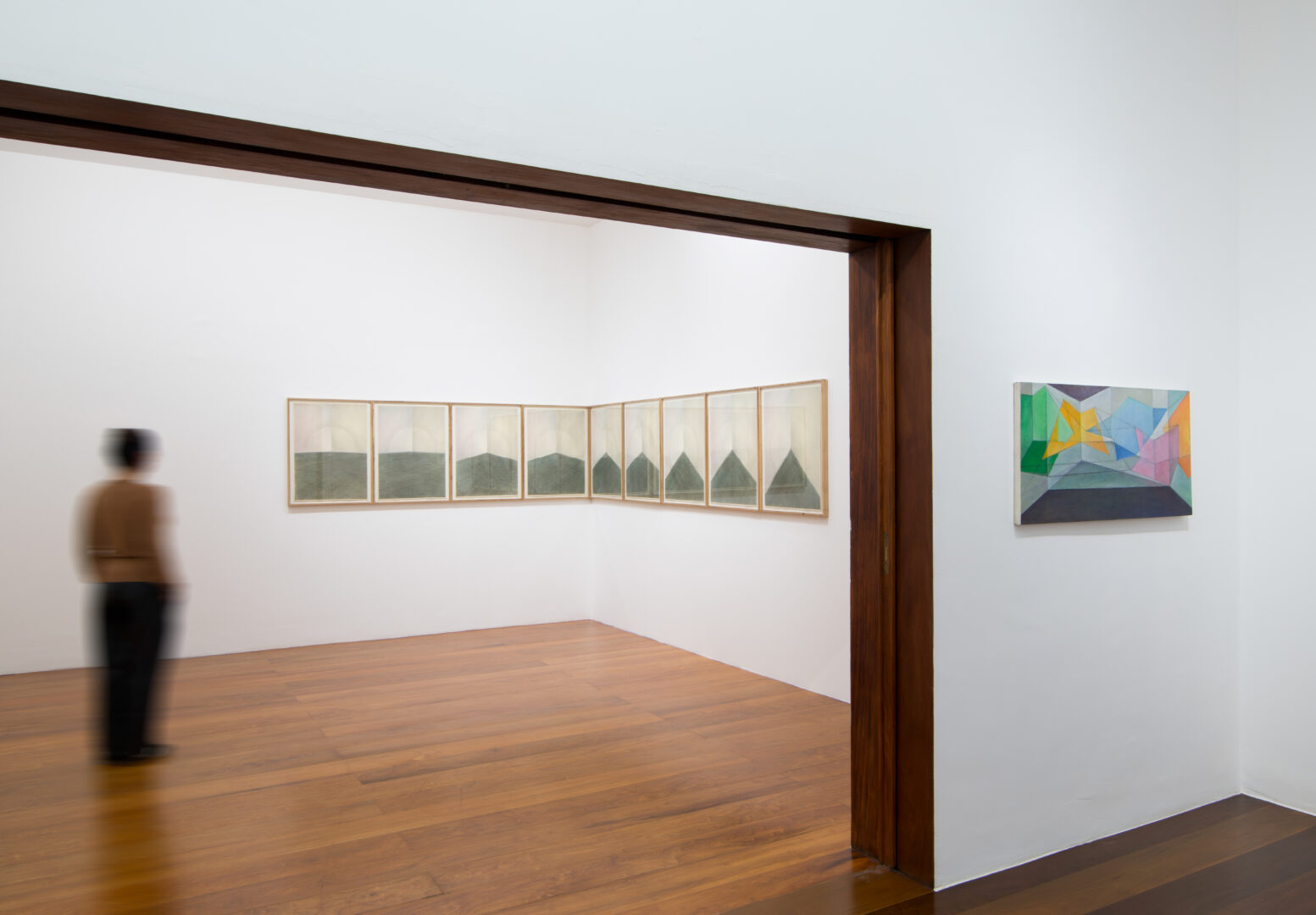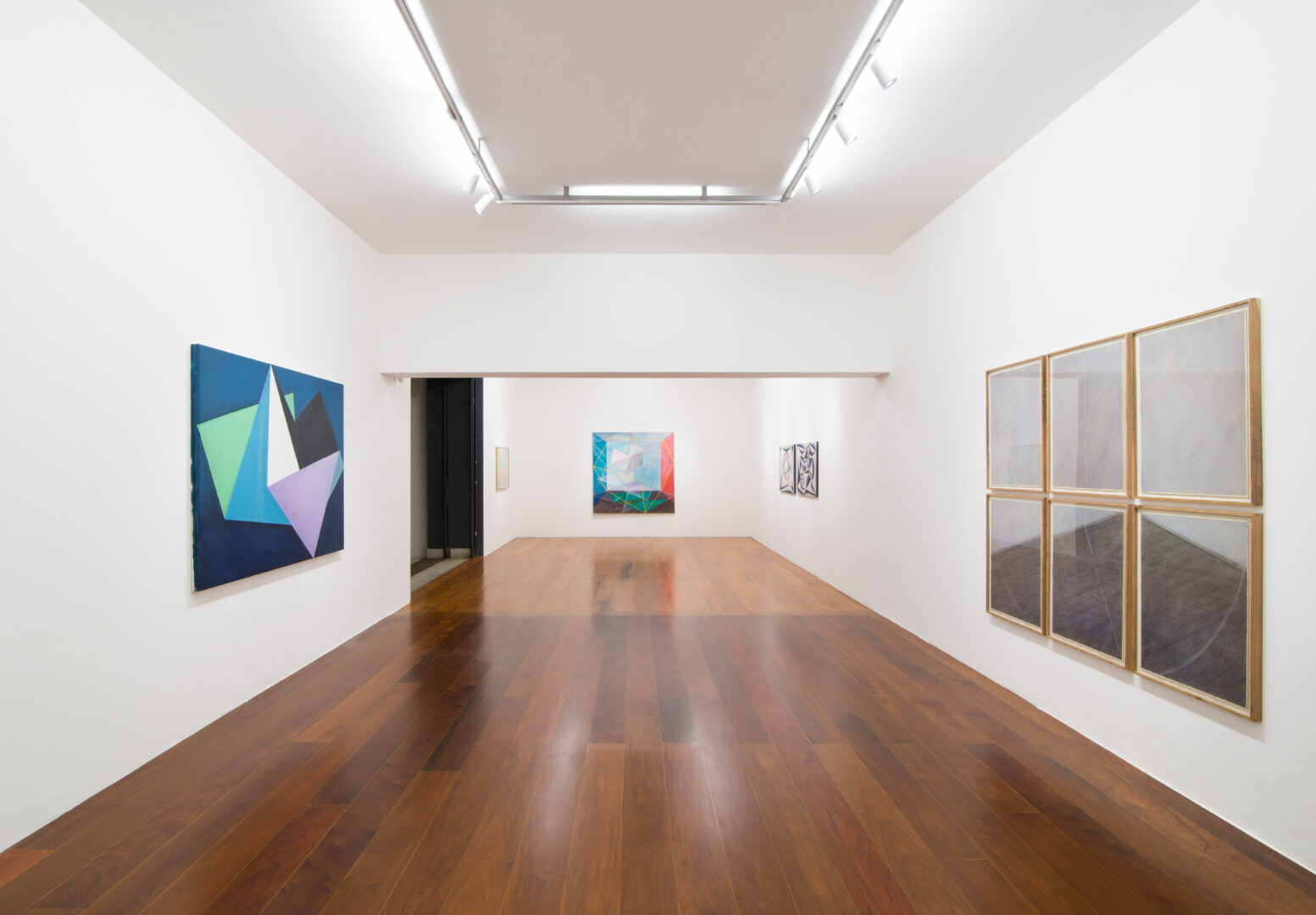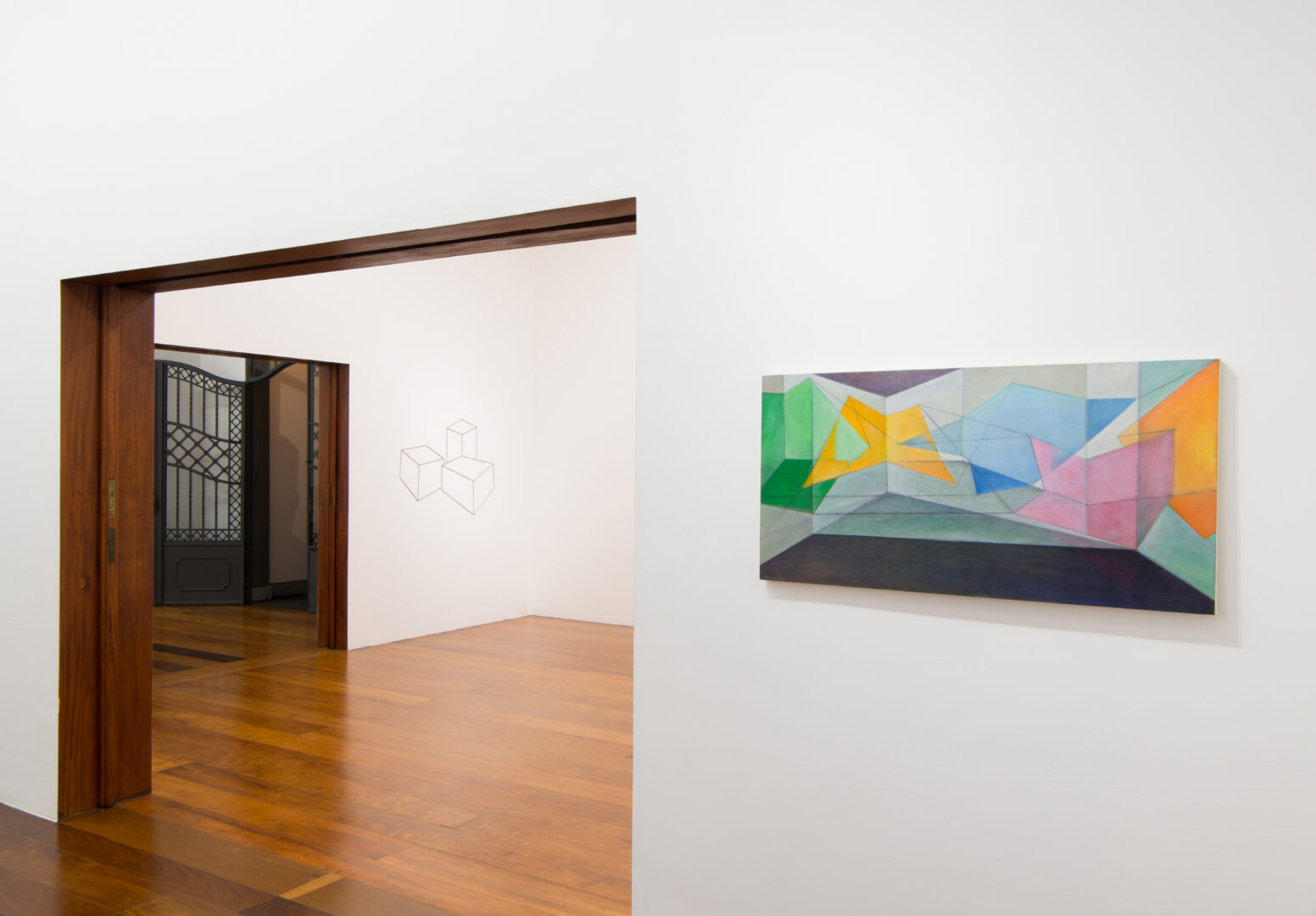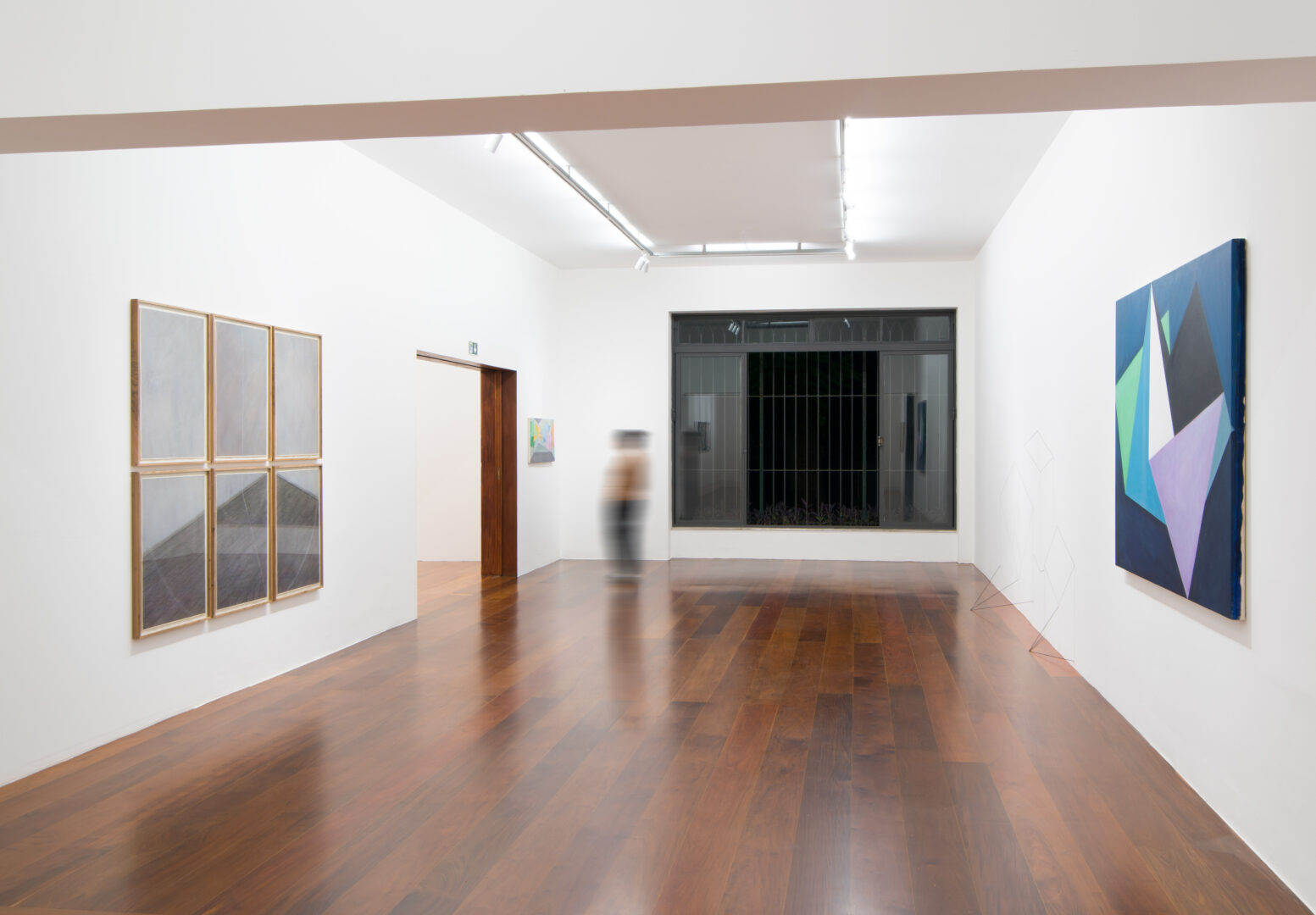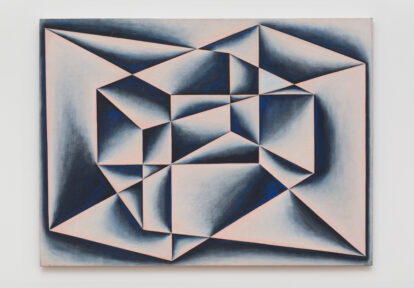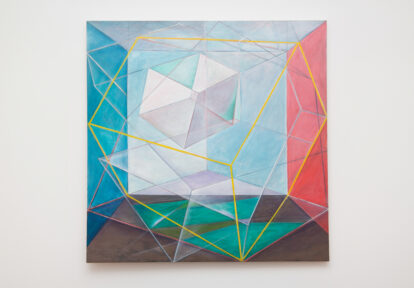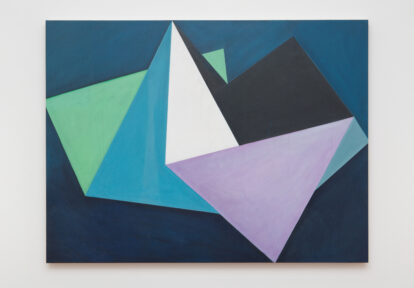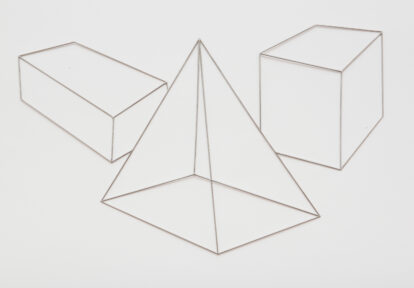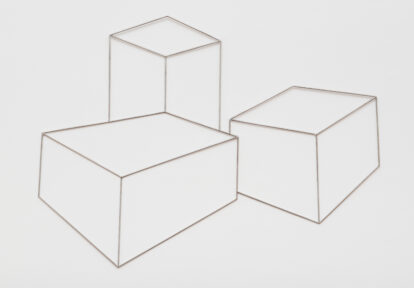“I want to express the immateriality in everything”
Lydia Okumura
“The artwork is always what look at us in its absolute muteness, which begs our attention without, however, co-responding to our gaze, to our plea for revelation. It is that which, by beckoning us, does not give in to the relationship, laughs at every projection onto it, and escapes.”
Maria Continentino Freire
A large geometric shape seems to detach from one of the walls, coming off it and melding with it right in front of me. I see some of its outlines as one sees a drawing on paper. But some of its traces draw up the space outside the wall, outside the paper. The gallery floor, which would otherwise go unnoticed to me, is now emphasized as a support to this drawing. I walk on the floor; and upon the artwork, a walk. My movements twist and untwist the huge figure which, in a simple, economic way, presents me with ideas. An idea, a truth, a fragment of knowledge will catalyze sentences. Like these ones that begin to draft themselves in this text.
Whereas I first apprehend the geometries as cubes, afterwards, I am no longer certain. This flexing of the outlines in Metamorphosys II (1981) equally takes place when I observe Standing Within the Horizontal (1978) and One Is Three Within (1982). Spatial transformation, from three-dimensional to flat surfaces to multi-dimensions perceptible by the mind, occurs before me and alongside me. But that is not all: it also takes place behind eyesight.
“Here, I delve into drawing, for in drawing, in the experience of drawing, the experience of the trace is at play. It is the experience of what comes to settle a boundary between spaces, times, figures… yet this is a boundary that is at once a condition of visibility and invisible.”
*
In thinking, we involuntarily seek to figure out the puzzle that surrounds us. It is almost an obsession to try and piece together the parts or fill in the blanks to hopefully bring forth images that are coherent and recognizable to us. But at the same time, like a game in reverse, what has come to be known as perceptionseems to kick in, confusing our experience of the environs by creating illusory perspectives far removed from what really unfolds – or is drawn up –, making room for fantasy. And thus, we doubt.
In the effort to grasp what encircles us, we come up with narratives, possibilities, species of spaces. That is what I am doing here, as I write Whenever something departs from the usual intellective patterns, like a wire or a string stretched out between two points that disguises or transmutes itself into a trace drawn on the wall, and one can no longer tell whether it is two or three-dimensional, perception bends, and even breaks, and we are forced to reinterpret the environs now considering the strange novelty. Herein lies the imponderable.
The works of Lydia Okumura’s touch me through the spaces in between the things my eyes can touch. Much of what we see in the artist´s drawings, paintings, and situations shown here does not takes place in the space in between our eyes, nor within the boundaries they reach, but behind them, as they blink. In what may well be an “interview”. Because blinking, a subtle eyelid movement, does not simply deprive one from sight, but also allows one to see, “just as the meaning of the text also comes together within the blanks in the writing.”
And then there are the volumes. In the installation Relocation of The Cube (1972) the emptied space of the grass become filled in and encroach, through mirroring, towards the void above the ground – depending on one’s point of view. Or better yet, points of view. The spectator’s experience is a consciousness reflecting itself. Almost like in a mirror, we are reflecting our very selves. What takes place within us is the experience, and that experience is also my work.
The air between the strings attached to the gallery walls and floor in Untitled (from the Appearance series) becomes filled up with painting. The paint layers are so thick they create a solid three-dimensional block. We do not see it outside our eyes, but it is there. Because what is not visible is precisely what gives sight back to the observer, reminding one to look see, to thinking out of sight.
*
I try to look at the artworks with one eye, and to see what I do not see in them with the other; what is there, and what is not, yet constitutes them. Like a hole that exists only through what surrounds it. But “what is a hole?”, a clown inquired of his mate. Realizing his perplexity, he triumphantly declares: “a hole is an absence surrounded by presence,” as René Daumal put it in The Pataphysics of Ghosts. And so all that I – we – can do is to go around the works of Lydia Okumura by circling our way onto them, walking on their edges and the boundaries they trace in space. Following their threads.
When faced with Vertical/Horizontal (1976), I am reminded that I see through binocular vision: when covering one of my eyes, I glance something different than what I see when covering the other one. I have two points of view in just one head. The viewing angles this polyptych reveals to us lead us to mentally walk in a virtual space of possibilities. And Lydia’s drawings are what projects this traversing.
It is intriguing to realize how opening up and closing down spaces is no easy task. As we come upon the corner where Metamorphosys II is situated, where the painting on the walls and on part of the floor toys with our spatial awareness, a portal opens to previously nonexistent places; a gateway that leads us to reinterpret what surrounds us, transforming not only its architecture, but even the possibilities of occupation by those who walk through it.
This text is a testimonial, a point of view. I trace it as such “because writing about an artwork ultimately reveals our projection onto it as a desire to appropriate what we do not see, what escapes.” And this perhaps explains the ambiguities inherent to my attempts at keeping a clear, objective path as I write. For I write outside the wall, outside the paper.
What remains open-ended?
What completes itself?
What new spaces arise as we are guided through Lydia Okumura’s works and take promenades with them?
__________________________________________
This text employs some quotes from Lydia Okumura interviews. These quotes are highlighted in bold and italics.
I also quote researcher Maria Continentino Freire’s 2014 thesis “Pensar ver: Derrida e a desconstrução do ‘modelo ótico’ a partir das artes do visível” (“Thinking out of sight: Derrida and the deconstruction of the ‘optical model’ from the visual arts”), always in italicsand quotation marks.

